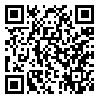BibTeX | RIS | EndNote | Medlars | ProCite | Reference Manager | RefWorks
Send citation to:
URL: http://jdisabilstud.org/article-1-2637-en.html
Background & Objectives: Law escape is one of the abnormal behaviors with a relatively high prevalence in adolescence. The law escape is when a person disobeys the law and engages in behavior contrary to the law. Cultural and ethical education injuries can increase the law escape. Cultural injuries refer to a set of ideas, beliefs, values, and norms conflict with the prevailing and approved culture of society. Ethical education means creating conditions for the flourishing and cultivating ethical talents and abilities, and ethical education injuries means the existing problems and challenges for the realization of ethical education. Because of the relatively high prevalence of law escape in adolescents and little research on the role of cultural injuries and ethical education injuries in its prediction, the present research was conducted to predict high school secondary adolescent students' law escape score based on cultural injuries and ethical education injuries.
Methods: This study was a cross–sectional correlational type. The research population comprised high school adolescent students of Mashhad City, Iran, in the 2020–21 academic years (360000 students). The sample size was calculated at 420 students selected as a sample by the multi–stage cluster sampling method. The inclusion criteria were physical health, living with parents, willingness to participate in research and express their consent through Shad software, no history of rejection in previous grades, no use of psychiatric drugs such as antianxiety and antidepressants based on the report from school staff, and the lack of stressful events such as serious illness, divorce and death of relatives in the past three months. The exclusion criteria were not responding to more than 10% of items and not responding to tools after three follow–ups. The research instruments were Law Escape Questionnaire (Zare Shahabadi & Torkan, 2012), Research–Made Cultural Injuries Scale and Ethical Education Injuries Questionnaire (Shekari et al., 2014) which were completed by students through Shad software. The obtained data were analyzed with descriptive statistics, including number, percentage, mean and standard deviation and inferential statistics, including the Kolmogorov–Smirnov test, variance inflation factor, Durbin–Watson, the Pearson correlation coefficients and multiple linear regression in SPSS version 19 software at a significance level of 0.05.
Results: The results showed that most adolescent students were male (51.67%), studying in the tenth grade (37.38%), and 16 years old (38.33%). Also, many fathers (34.45%) and mothers (35.95%) had an associate degree. Also, cultural injuries and all its subscales including acceptance of anti–values, injuries of smart mobile, cultural anonymity and cultural aggression had a direct and significant relationship with law escape score in high school secondary adolescent students (p<0.001). In addition, ethical education injuries and all its subscales, including courage, honor, honesty, patience, loyalty, bailment, goodwill, reliance, and conscience had an inverse and significant relationship with their law escape score in high school secondary adolescent students (p<0.001). Other findings showed that subscales of cultural and ethical education injuries variables together could explain 89% of law escape score changes in high school secondary adolescent students (p<0.05).
Conclusion: According to the study results, cultural and ethical education injuries effectively predicting law escape in high school secondary adolescent students. As a result, to reduce law escape, cultural and ethical education injuries must be reduced.
| Rights and permissions | |
 |
This work is licensed under a Creative Commons Attribution-NonCommercial 4.0 International License. |



